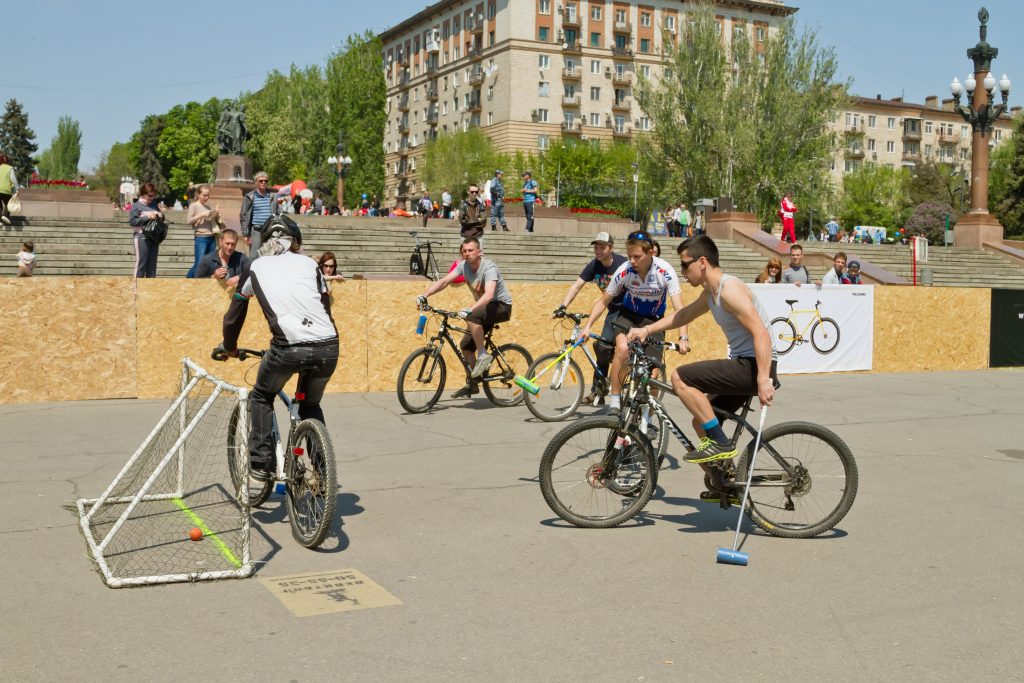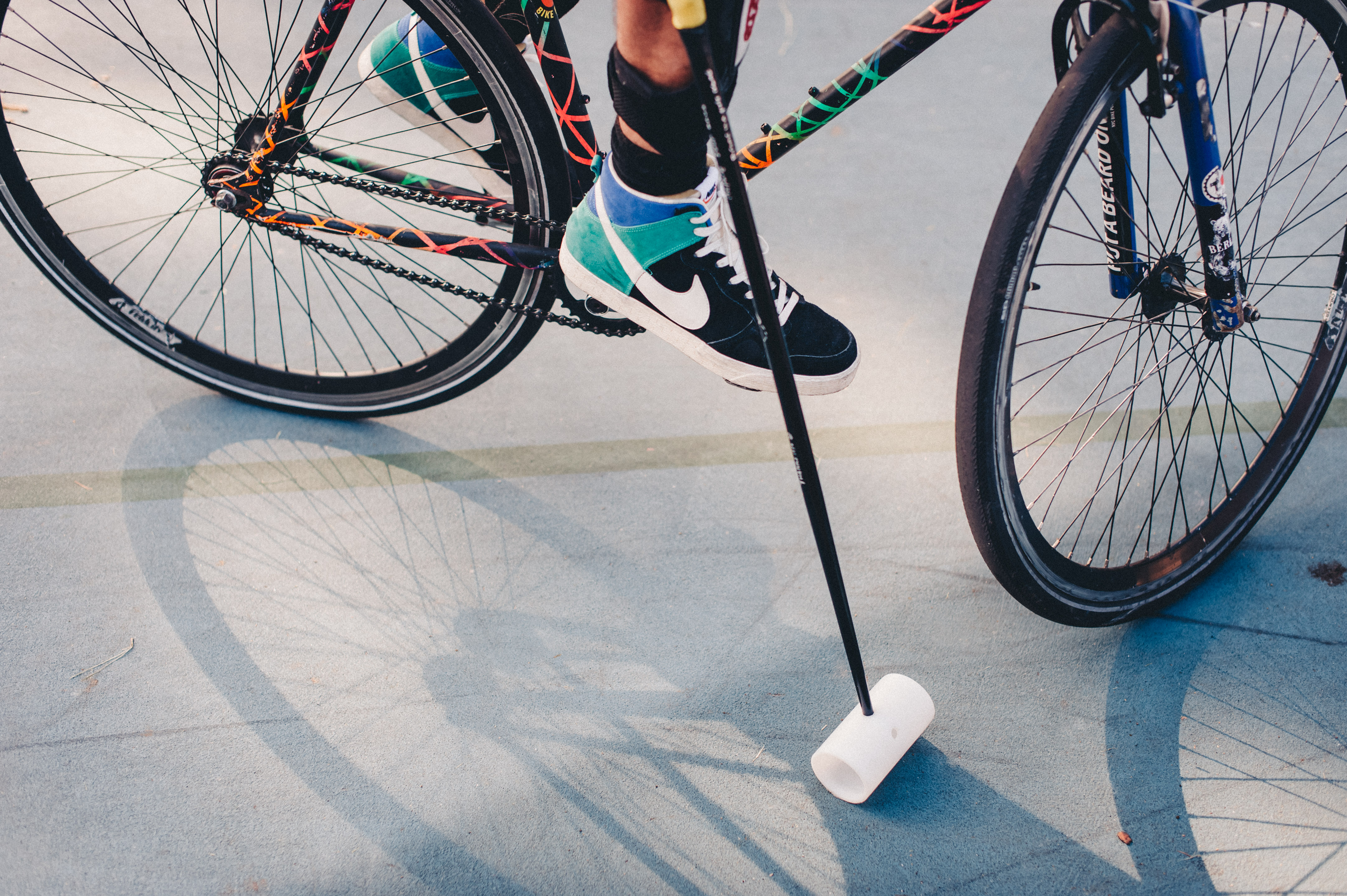Bike Polo, or to give it its official name, Hardcourt Bicycle Polo, is what you would imagine it to be. A game of polo played on an asphalt surface rather than turf, riding bicycles rather than horses. It is said to have originated in Seattle, USA, in the early 2000s as a way for bored bike messengers to kill some time between deliveries.
The sport started gaining traction around 2004 and is currently played in over 300 cities in about 30 countries of the world. As a decentralized and organically growing sport, the rules vary from city to city, although various boards have sprung up to promote and unify the sport. Chief among these governing bodies are the North American Hardcourt Bike Polo Association (NAHBPA), European Hardcourt (EHBP), Australasian Hardcourt (AHBP) and Bici Polo Latinoamerica (BPLA).

Rules of the game
As mentioned above, the sport is still in its infancy, and therefore the rules are in a state of flux. However, some of the main rules would be:
- At the beginning of the game, the ball is placed in the middle of the court while the players wait behind their own goals. Following a countdown or a whistle, a player from each team charges the ball in what is termed the “joust.”
- A player may hit the ball in two ways: a “shot” or a “shuffle.” A shot is made with either end of the mallet head whereas a shuffle is when the ball is hit with the side. To score a goal, a player must hit the ball into the opposing team’s goal with a shot; if the player uses a shuffle, the goal does not count and play continues.
- Following a goal, the scoring team returns to their own half of the court. After the scoring team returns to their half, the scored-on team may cross the half-line and resume play.
- The game continues until a predetermined length of time is reached. This time limit is dependant on the number of players in the game. 3v3 games are typically 10–15 minutes, while Squad (5-6 players with substitutions allowed) games are usually 30–60 minutes.
- A player who puts their foot down, or ‘dabs,’ must undertake some form of remedial penalty before making contact with the ball again. This penalty usually involves “tapping out,” which consists of riding to a designated point on the court and touching it with the mallet. It is also common to have to say “foot down” or “dab” to let other players know you are out of play, but not required. The ‘dabbing’ play should avoid affecting play of the game at all costs after a foot down occurs.
- The amount of contact in a particular game may vary but is generally restricted to “mallet to mallet,” “body to body.” A “check,” or shoving off the ball, is allowed as long as it’s “shoulder to shoulder” and deemed safe by the referee.
Equipment
You don’t need much to play bike polo; just a mallet, a ball, some goalposts, and a bike. However, as bike polo has evolved and people have become more invested in the sport, companies like Lightfoot have started producing polo-specific bikes and mallets, which further enhances the legitimacy of the game.
Although any type of bike will get the job done, there are undeniable advantages of finding a bike that will suit your play-style. Or if you want to pay homage to the DIY roots of the sport, you could always customize your existing rig with specialist parts.
Some players make wheel covers out of corrugated plastic, polycarbonate, plastic netting, or even thick fabrics to protect spokes and create solid blocking surfaces. Many of these covers are painted with elaborate designs to help identify riders or their city’s club.
Low gear ratio single-speed bikes have advantages for quick acceleration and control on a small court. Most riders prefer a short wheelbase for tight turning and a smaller “5-hole” as well as a medium to long stem for better turning. Front brake or dual brake setups are the most popular.
Handlebar lengths are another part of the bike that many players tend to modify. Some players prefer shorter, narrower handlebars to avoid being bumped and so that it does not interfere with their swing. Others prefer to go for more extended handlebars for a better grip.
Another important consideration is, of course, safety equipment. As a participant of a fast-paced urban sport, you will be exposed to rogue balls and crashes. While there are no official guidelines for protective equipment, it is recommended that you at least wear a crash helmet, elbow- and kneepads, a mouthguard, and gloves.
In Conclusion
Bike polo looks to become a more mainstream sport while retaining its quirky, DIY nature that made it so attractive in the first place. A bit like rollerblading and skateboarding. A sport that aims to showcase skill, riding ability, and technique, but at its very core, is just about having a good time.

